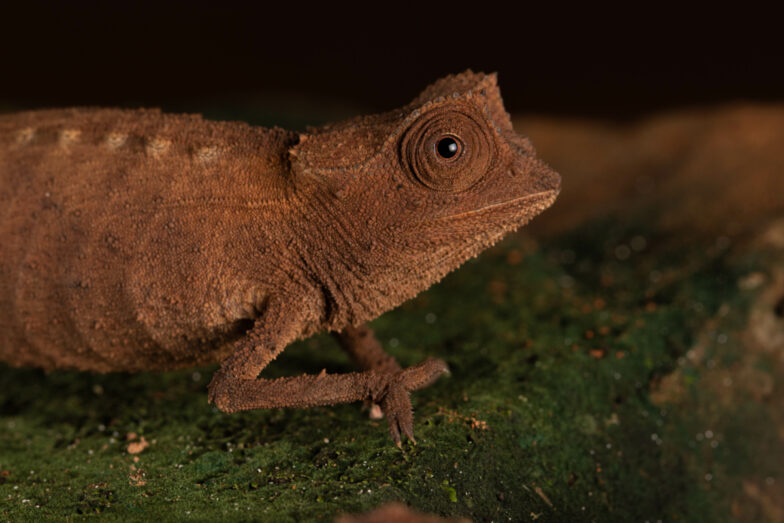Last weekend, the autumn meeting of the AG Amphibien- und Reptilienkrankheiten (working group on amphibian and reptile diseases) took place. With over 500 members, the AG ARK is one of the strongest sub-groups of the DGHT and at the same time the largest association of veterinarians for amphibians and reptiles in Europe. Accordingly, the autumn meeting in Münster was fully booked as usual. Besides the main topic of the meeting, Asian turtles, one veterinarian presented a case report on parasite treatment in leaf chameleons.
In this case, 7.5 subadult and adult Brookesia stumpffi (5 wild-caught, 7 German offspring from different husbandries) were acquired for a breeding project. Fecal examinations of all terrestrial chameleons were carried out. Masses of Choleoeimeria spp., presumably Choleoeimeria brookesiae, were found in flotation and native preparations of almost all terrestrial chameleons. In addition, there were isolated co-infections with Heterakis spp. and trematodes. Strongylid-like eggs with thin shells and larvae as well as adult nematodes were found in the feces of several animals. A treatment protocol with Baycox 50 mg/ml (Elanco Animal Health, Rathausplatz 12, 61352 Bad Homburg, Germany, active ingredient toltrazuril) on days 1, 7, and 14 and Panacur 10% (Intervet Germany, Feldstraße 1a, 85716 Unterschleissheim, Germany, active ingredient fenbendazole) on day 3 and 13 proved successful. The diluted solutions were given into the mouth with a 100 µl pipette. Fecal examinations at the beginning of quarantine and on days 14, 28, and 42 after treatment were suggested as a practical protocol for veterinarians.
The biggest problem during treatment was reinfection with coccidial oocysts from the environment. The leaf chameleons reinfected themselves, among other things, via left feeders and fecal remains on climbed gauze and living plants. Successful quarantine was finally achieved under the following parameters: individual keeping without visual contact in separate terrariums, daily exchange of kitchen paper on the floor and a freshly cut elder branch, use of new gloves for each chameleon, slow-moving food from bowls disinfected daily in boiling water, weekly disinfection with ready-to-use Interkokask® (Albert Kerbl GmbH, Felizenzell 9, 84428 Buchbach, active ingredient chlorocresol). Extremely strict compliance with all cleaning and disinfection measures was necessary.
Parasite treatment in leaf chameleons (Brookesia stumpffi)
Dr. Alexandra Laube
Proceedings of the 57th Workshop of the WG Amphibian and Reptile Diseases, Focus: Asian Turtles
Münster, 04 – 06 November 2022


